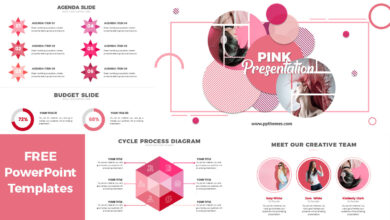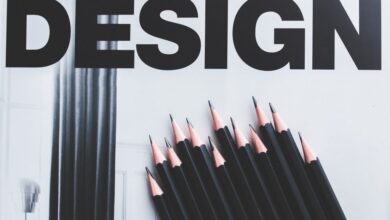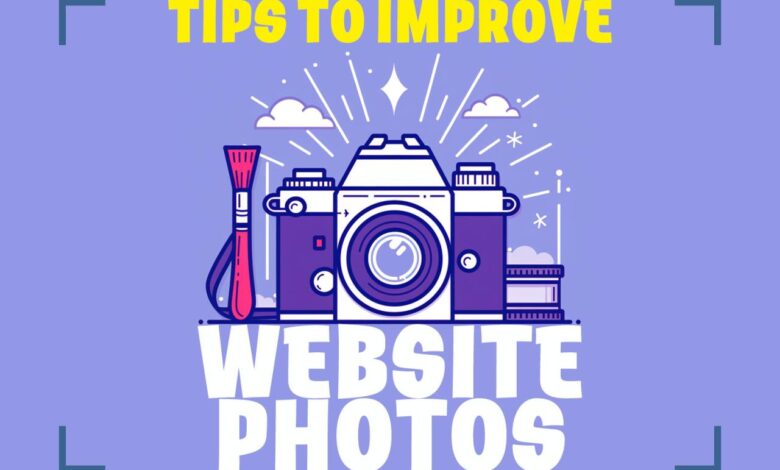
Elevate Your Designs with Authentic Photos
Elevate Your Designs with Authentic Photos: Forget cheesy stock photos! Let’s dive into the world of using real, authentic photography to make your designs truly pop. We’ll explore where to find these gems, how to use them effectively, and even touch on the ethical considerations to keep your projects both stunning and responsible. Get ready to transform your design game!
This post will guide you through the process of sourcing, selecting, and integrating authentic photos into your designs. We’ll compare the impact of authentic photos versus stock images, discuss methods for obtaining usage rights, and offer practical tips for seamlessly integrating these images into websites, brochures, social media, and more. We’ll also explore the ethical considerations surrounding the use of authentic photography and offer best practices for responsible image usage.
The Power of Authentic Photography
Authentic photography is more than just a pretty picture; it’s a powerful tool that can significantly elevate your design projects and enhance your brand’s message. Using genuine, unstaged images creates a connection with your audience that stock photos simply can’t replicate. This connection stems from a sense of realism and relatability, fostering trust and engagement.Authentic photos inject a unique personality and visual voice into your designs.
They offer a level of detail and spontaneity that mass-produced stock images often lack, leading to a more memorable and impactful visual experience for your viewers. The difference is palpable; authentic photography breathes life into a design, while generic stock images can feel flat and impersonal.
Visual Appeal: Authentic vs. Stock Photography
The visual impact of authentic photography versus stock images is strikingly different. Stock photos, while readily available, often feel generic and staged. They lack the natural imperfections and unique characteristics that make authentic images compelling. Think of the difference between a perfectly posed family portrait in a studio versus a candid shot of a family laughing together at a picnic – the latter instantly feels more genuine and relatable.
Authentic photos possess a certain rawness and honesty that instantly grabs the viewer’s attention and creates a more emotional response. This emotional connection is key to building brand loyalty and trust.
Authenticity Enhances Brand Storytelling
Authentic photography plays a crucial role in effective brand storytelling. By showcasing real people, real places, and real moments, you build a stronger connection with your audience. Instead of presenting a polished, idealized version of your brand, you reveal its authentic personality and values. For example, a clothing brand showcasing real people wearing their clothes in everyday settings creates a sense of authenticity and relatability that transcends the typical fashion campaign.
This approach allows consumers to see themselves in the brand’s narrative, fostering a sense of belonging and strengthening brand loyalty. It moves beyond simply selling a product; it’s about sharing a story and building a community.
Authentic vs. Stock Photography: A Comparison
| Feature | Authentic Photography | Stock Photography |
|---|---|---|
| Cost | Higher upfront cost, potentially requiring photographer fees and editing | Lower upfront cost, readily available through subscriptions |
| Uniqueness | Highly unique and original; unlikely to be used by competitors | Potentially used by many others, lacks originality |
| Relatability | High relatability; feels genuine and connects with viewers on an emotional level | Lower relatability; often feels staged and impersonal |
| Time Investment | Higher time investment in planning, shooting, and editing | Lower time investment; readily available and easily integrated |
Sourcing Authentic Photos
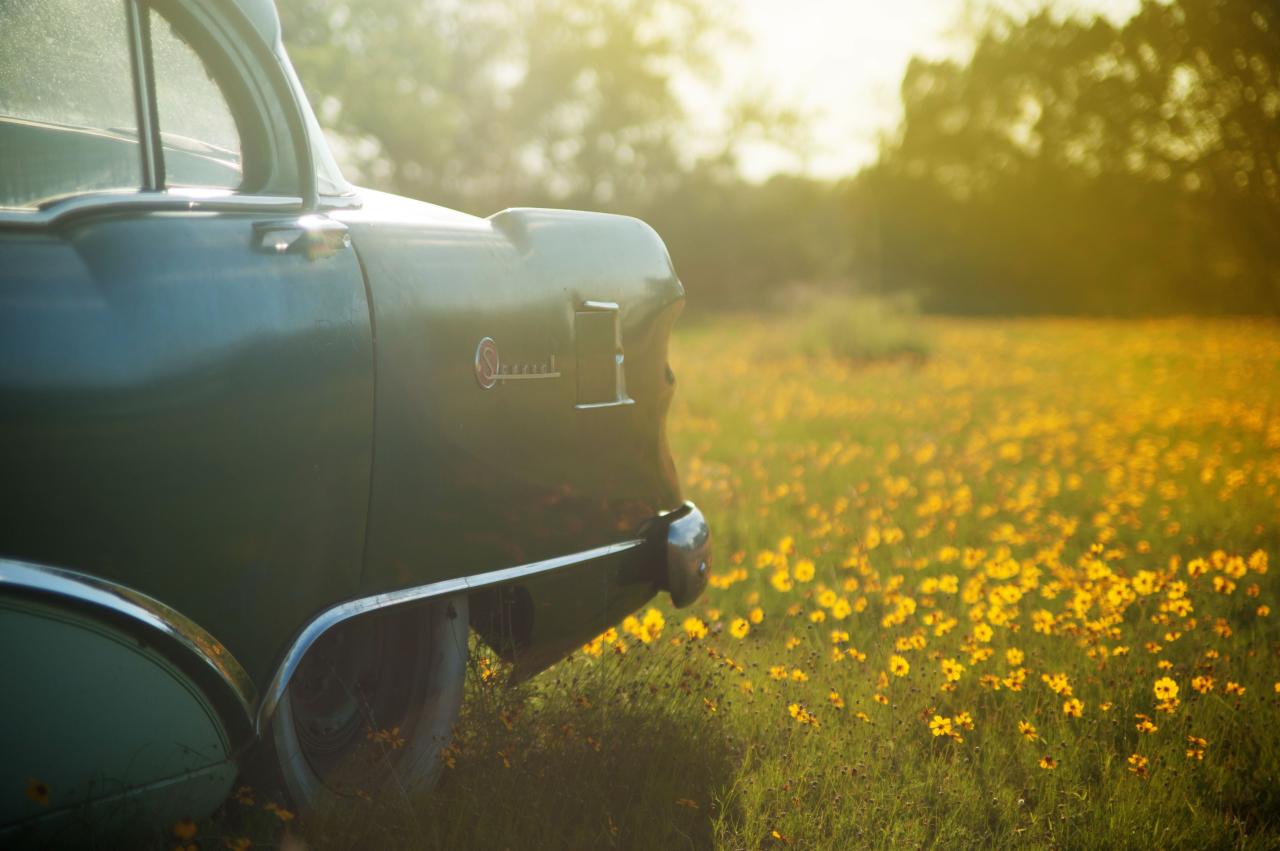
Source: befunky.com
Finding genuinely authentic photos that resonate with your design projects is crucial for creating impactful visuals. It’s about more than just pretty pictures; it’s about choosing images that tell a story and connect with your audience on a deeper level. This means moving beyond generic stock photos and exploring diverse avenues for sourcing your imagery.The beauty of authentic photography lies in its unique ability to inject personality and genuine emotion into your designs.
This authenticity, however, requires a conscious effort in sourcing, obtaining rights, and selecting the perfect images. Let’s delve into the specifics.
Diverse Sources for Authentic Photographs, Elevate your designs with authentic photos
Finding authentic photos involves exploring a wider range than just standard stock photo websites. Consider these diverse options:Your own personal archives are a goldmine of unique and authentic images. Think about past travel photos, family snapshots, or even images you’ve taken specifically for creative projects. These images carry a personal touch that’s hard to replicate. Collaborations with photographers offer another excellent avenue.
Partnering with a photographer allows you to commission bespoke shots tailored to your exact needs and brand aesthetic. This collaborative approach ensures you receive high-quality images perfectly aligned with your vision. User-generated content (UGC) offers a wealth of authentic images, particularly on platforms like Instagram or Flickr. However, it’s crucial to obtain proper permissions before using any UGC.
Obtaining Appropriate Usage Rights for Photos
Before using any photograph, regardless of the source, it’s essential to understand and secure the necessary usage rights. This usually involves contacting the copyright holder (the photographer or owner of the image) and negotiating a license. For personal archives, you own the copyright, but for collaborative work or UGC, a clear agreement is crucial. This agreement should specify how the image will be used (website, print, etc.), the duration of the license, and any associated fees.
Always obtain this in writing. Failing to do so could lead to copyright infringement and legal repercussions.
Vetting and Selecting Authentic Photos for a Design Project
The selection process is crucial. It’s not simply about choosing pretty pictures; it’s about choosing images that fit your project’s specific needs and aesthetic. Begin by defining the overall tone and style you’re aiming for. Then, carefully review potential images, considering factors like composition, lighting, subject matter, and overall emotional impact. Ensure the chosen image aligns seamlessly with your brand identity and the message you want to convey.
Consider creating a mood board to visualize the overall aesthetic before you begin searching. This helps narrow your focus and ensures consistency.
Factors to Consider When Evaluating Authenticity and Quality
Choosing authentic and high-quality photos involves careful consideration of several factors. A checklist can be invaluable:
- Resolution and Technical Quality: Is the image sharp and clear, or blurry and pixelated? High resolution is essential for print and large-scale digital applications.
- Composition and Framing: Is the image well-composed, with a clear focal point and pleasing arrangement of elements?
- Lighting and Color: Does the lighting enhance the subject matter, creating a desirable mood and atmosphere? Are the colors vibrant and accurate, or dull and washed out?
- Emotional Impact: Does the image evoke the desired emotion or feeling in line with the project’s overall goals?
- Relevance and Context: Does the image directly relate to the project’s theme and message? Does it provide context or add meaning?
- Originality and Uniqueness: Does the image stand out? Does it offer a fresh perspective or a unique visual element?
- Copyright and Usage Rights: Have you obtained the necessary permissions to use the image legally?
Integrating Authentic Photos into Designs
So you’ve sourced your authentic photos – fantastic! Now comes the crucial part: seamlessly weaving them into your designs. This isn’t just about slapping an image onto a webpage; it’s about creating a cohesive visual narrative that enhances your message and captivates your audience. Successful integration requires careful consideration of context, visual harmony, and subtle editing techniques.
The key is to understand that authentic photos aren’t just visual elements; they’re storytelling tools. They bring a sense of realism and relatability that generic stock photos often lack. Integrating them effectively involves understanding how they interact with other design elements, like text, color palettes, and the overall layout. A poorly integrated photo can distract from your message, while a well-integrated one can significantly amplify its impact.
Strategies for Seamless Integration Across Design Contexts
The approach to integrating authentic photos varies depending on the design context. Websites require a different approach than brochures or social media posts. Consider the following:
- Websites: Use high-resolution images strategically placed within the layout, ensuring they don’t overwhelm the text or other elements. Consider using hero images to immediately grab attention on landing pages, and smaller, supporting images within the body content. For example, a website showcasing handcrafted jewelry might use a close-up photo of a piece as a hero image, then smaller images showcasing the artisan at work throughout the site.
- Brochures: Maintain a consistent visual style throughout. Authentic photos can be used to break up large blocks of text, add visual interest, and create a more engaging experience. A travel brochure, for instance, might use landscape photos to showcase destinations, interspersed with smaller images of activities and local culture.
- Social Media Posts: Optimize images for the specific platform. Instagram, for example, benefits from visually striking, square or vertical images, while Facebook allows for more flexibility. Consider using photos that align with current trends and hashtags to improve engagement. A food blogger might use close-up, mouthwatering photos of their creations on Instagram, paired with engaging captions.
Maintaining Visual Consistency
Visual consistency is paramount. Using authentic photos alongside other design elements requires a unified aesthetic. This involves selecting images with similar color palettes, lighting styles, and overall mood. Consider creating a mood board to guide your choices.
Elevating your designs with authentic photos is key to grabbing attention, whether it’s for your website or social media. To really boost your reach, consider how you present your visuals, and check out this awesome guide on getting it on with youtube to learn how to leverage video. Mastering both strong visuals and video marketing will seriously elevate your designs and get your message across effectively.
For example, if your brand uses a muted, earthy color palette, your authentic photos should reflect that. Avoid jarring contrasts in color or style. Consistency builds trust and reinforces your brand identity. Imagine a website for a minimalist clothing brand: the photos should be similarly clean, simple, and well-lit, avoiding busy backgrounds or overly saturated colors.
Step-by-Step Guide to Authentic Photo Editing
Enhancement, not alteration, is the goal. The following steps help preserve the authenticity of your photos while improving their visual appeal:
- Assess the image: Identify areas needing minor adjustments. Focus on improving clarity, contrast, and color balance.
- Light adjustments: Use tools to subtly adjust brightness, contrast, and shadows. Avoid over-processing, which can make the image look artificial.
- Color correction: Fine-tune color balance and saturation, ensuring the colors remain natural and realistic.
- Cropping and resizing: Carefully crop the image to improve composition and remove distractions. Resize to the appropriate dimensions for your design context.
- Sharpening (optional): Subtle sharpening can improve clarity, but avoid over-sharpening, which can introduce artifacts.
Using Color Palettes and Visual Hierarchy
Color palettes and visual hierarchy play a crucial role in complementing authentic photos. The colors in your photos should work harmoniously with your overall design. Use color theory to create a visually pleasing and cohesive effect. Visual hierarchy helps guide the viewer’s eye, ensuring the photos support, rather than detract from, your message.
For example, a photo with predominantly warm tones might be complemented by a color palette that includes similar warm hues. Ensure the photo’s placement within the design reinforces its importance. A prominent photo might be placed centrally and surrounded by ample white space to emphasize its impact. Conversely, smaller, supporting images might be placed within the body text to break up the content.
Illustrative Examples of Authentic Photography in Design
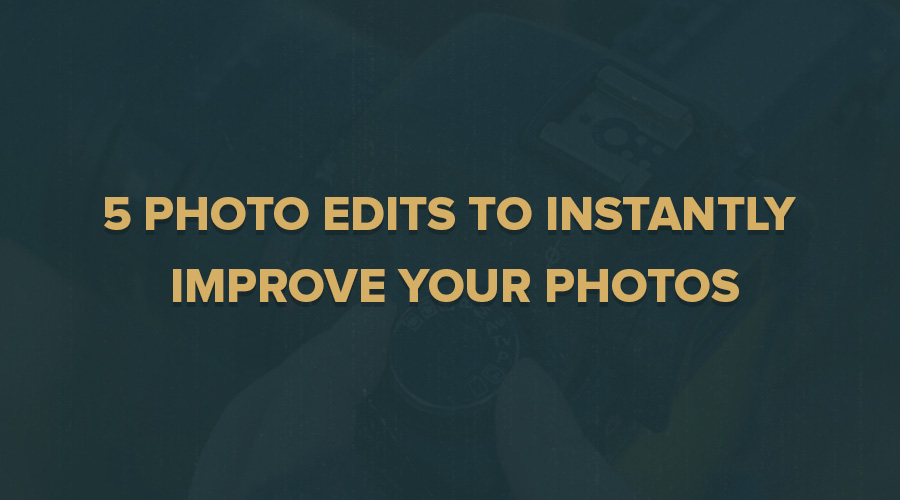
Source: filtergrade.com
Authentic photography elevates design by injecting genuine emotion and relatability. It moves beyond stock imagery’s sterile perfection, offering a glimpse into real life and fostering stronger connections with audiences. Let’s explore some compelling examples.
Website Design Incorporating Authentic Photos
Imagine a website for a sustainable coffee company. Instead of glossy, overly-perfect images of coffee beans, the homepage features a series of candid shots. A close-up showcases the hands of a farmer carefully picking ripe cherries, emphasizing the human element in their supply chain. A medium shot depicts workers collaboratively sorting beans, highlighting the collaborative spirit of their production.
Larger, hero images on internal pages show families enjoying coffee in their homes – diverse families in various settings, reinforcing the inclusive nature of the brand. These images are subtly desaturated and have a slightly grainy texture, lending a vintage feel that complements the brand’s commitment to traditional methods. The photos are strategically placed to break up text blocks, improve visual flow, and reinforce the narrative of ethical sourcing and community.
Print Advertisement Using Authentic Photography
A print advertisement for a handcrafted jewelry brand features a close-up shot of a woman’s hands meticulously working on a piece of jewelry. The focus is on the intricate detail of her work, the texture of the metal, and the subtle light reflecting off the gemstones. The background is intentionally blurred, drawing all attention to the artisan’s skillful hands.
The brand’s logo is subtly placed in the corner, letting the photograph tell the story of quality craftsmanship and dedication. This avoids the sterile perfection often associated with advertising and instead focuses on the authenticity of the process and the human element behind the brand. The overall aesthetic is warm and inviting, reflecting the brand’s values.
Social Media Post Design with Authentic Photos
A social media post for a travel agency showcasing a trip to Iceland features a collage of images. One photo shows a hiker silhouetted against a stunning aurora borealis, capturing the awe-inspiring scale of the landscape. Another shows a close-up of steaming geothermal pools, highlighting the unique geological features. A third shows a group of friends laughing together in front of a majestic waterfall, emphasizing the social aspect of the experience.
The photos are edited to maintain a consistent, slightly cool color palette, which complements the Icelandic landscape. A simple, elegant font is used for the caption, which focuses on the feeling of adventure and connection with nature. The collage design allows for multiple aspects of the experience to be showcased simultaneously, creating a visually compelling narrative.
Logo Design Utilizing Authentic Photography
A photographer’s logo uses a slightly desaturated close-up of their camera lens, capturing the texture of the glass and the subtle reflections of light. The lens is slightly out of focus, creating a soft, dreamy effect. The photographer’s name is superimposed in a clean, modern font that complements the organic feel of the image. This approach emphasizes the photographer’s craft and personal style, communicating a sense of artistic vision and attention to detail.
It is a unique and memorable alternative to traditional logo designs and effectively uses the authentic photography as a core brand element, directly relating to their profession.
Ethical Considerations
Using authentic photos elevates design, but it comes with significant ethical responsibilities. We must prioritize the rights and well-being of individuals depicted and avoid perpetuating harmful stereotypes. Failing to do so can lead to legal repercussions and damage your brand’s reputation. This section explores best practices for ethical photo usage.
Privacy and Representation
The ethical use of authentic photos hinges on respecting the privacy and dignity of the individuals portrayed. Using images without consent, particularly those depicting identifiable individuals in compromising or private situations, is a serious breach of ethics and potentially illegal. Even seemingly innocuous photos can raise privacy concerns if the context suggests something beyond the image’s surface. For example, a candid shot of a person at a public event might be acceptable, but a close-up of someone’s home address displayed on a mailbox would be highly problematic.
Careful consideration must be given to the potential implications of each image.
Obtaining Consent
Obtaining informed consent is crucial when using photos of identifiable individuals. This means clearly explaining how the photo will be used, where it will be displayed, and for how long. Written consent, ideally signed and dated, is the most robust form of protection. For minors, consent must be obtained from a parent or legal guardian. Model releases are commonly used in professional photography and provide a legally sound framework for consent.
A model release typically includes details like the purpose of the photo, the photographer’s rights, and the model’s rights, such as the right to be compensated or to review the final product before publication. The language should be clear, concise, and easily understandable to avoid any ambiguity.
Diversity and Inclusivity
Authentic photography should reflect the diversity of the world. Failing to represent a wide range of ethnicities, ages, genders, abilities, and body types perpetuates harmful stereotypes and reinforces biases. Designers should actively seek out and utilize photos that showcase a diverse representation of humanity. This requires going beyond simply including people of color; it means consciously selecting images that depict the richness and complexity of human experience across all its facets.
For example, instead of using only images of young, able-bodied individuals, actively seek out photos of older adults, people with disabilities, and individuals from different socioeconomic backgrounds.
Avoiding Cultural Appropriation
Cultural appropriation occurs when elements of a culture are adopted by members of another culture, often without understanding or respecting their original context. In photography, this can involve using images from other cultures without proper attribution or understanding, potentially trivializing or misrepresenting cultural practices and traditions. It’s essential to thoroughly research the context of any image, particularly those depicting cultural traditions or practices.
Consult with cultural experts or community members if you are unsure about the appropriateness of using a particular image. Respectful representation requires understanding and acknowledging the origins and significance of cultural elements within their authentic context. For instance, using traditional clothing from a particular culture as a mere fashion statement without understanding its deeper meaning or giving credit to the culture’s artisans would constitute cultural appropriation.
Ultimate Conclusion
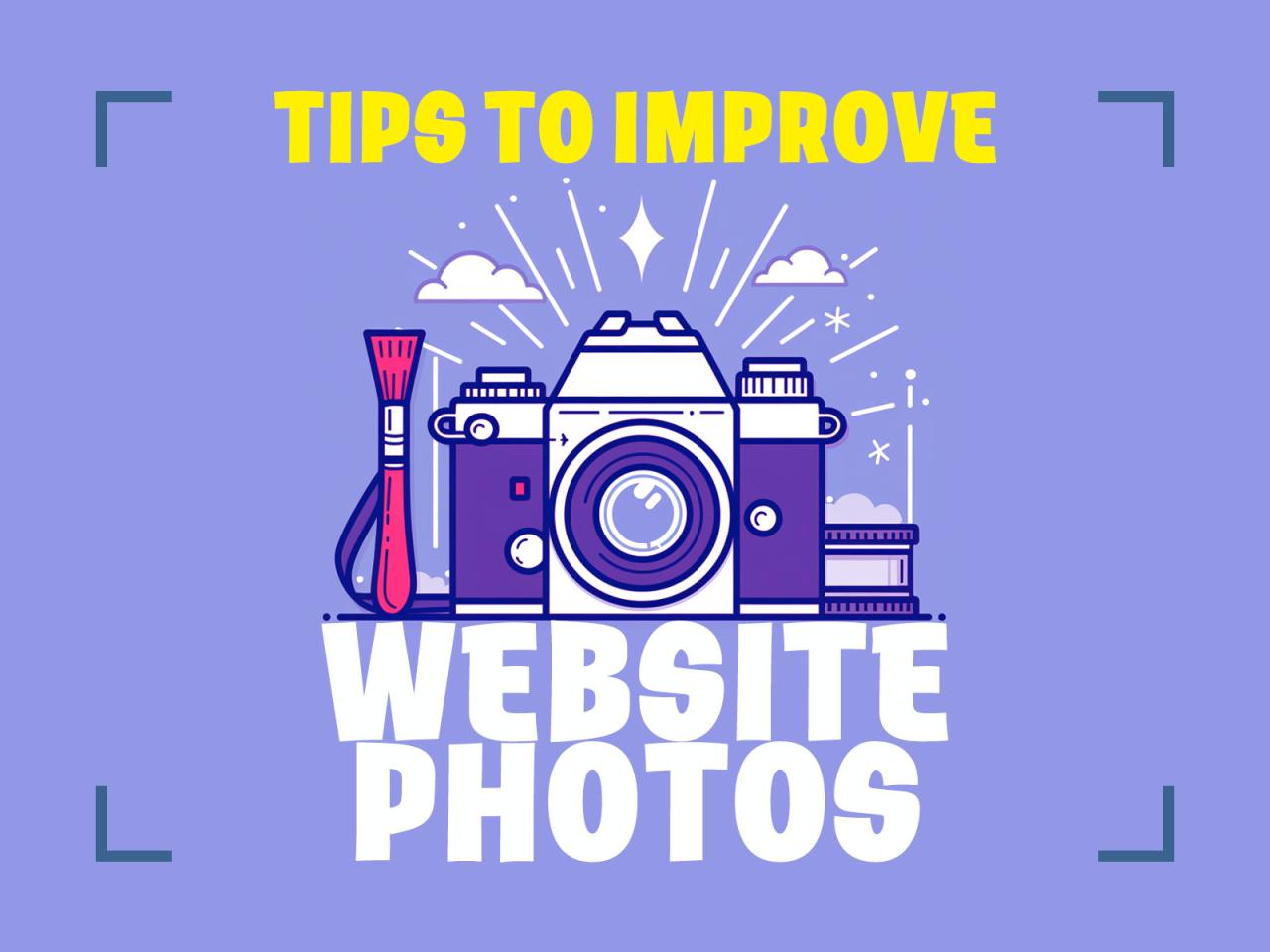
Source: graphicsfuel.com
Ultimately, using authentic photos is about more than just visual appeal; it’s about building trust and connection with your audience. By choosing images that resonate with your brand’s values and tell a genuine story, you can create designs that are not only beautiful but also meaningful and memorable. So, ditch the generic and embrace the authentic – your designs (and your audience) will thank you for it!
Detailed FAQs: Elevate Your Designs With Authentic Photos
What if I can’t find authentic photos that fit my specific needs?
Consider collaborating with a photographer! You can brief them on your exact requirements for a customized shoot.
How do I ensure I have the right to use an authentic photo?
Always obtain explicit permission from the photographer or rights holder. A written agreement is best.
What’s the best way to edit authentic photos without making them look fake?
Focus on subtle adjustments – color correction, minor cropping, and sharpening. Avoid heavy filters or unrealistic edits.
What if the person in an authentic photo doesn’t want their image used?
Respect their wishes. Remove the photo or find an alternative. Privacy is paramount.

